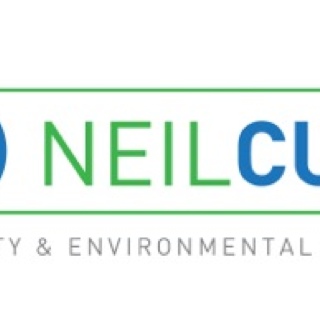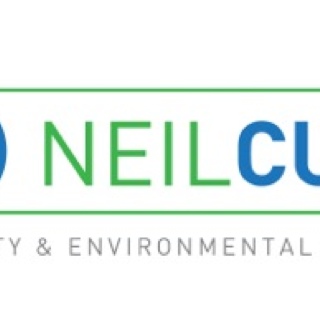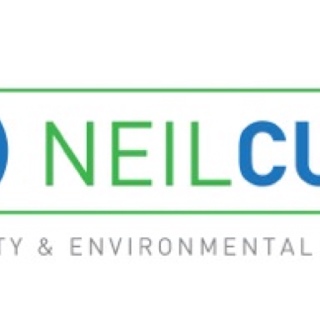Information
-
Document No.
-
Audit Title
-
Client / Site
-
Conducted on
-
Prepared by
-
Location
-
Personnel
1. Access
-
1.1. Are arrangements in place to deal with new visitors to site?
-
1.2. Can all personnel reach their place of work safely - are all gangways clear?
-
1.3. Are all walkways level and free from obstruction?
-
1.4. Is edge protection in place on all scaffolds and leading edges?
-
1.5. Are all holes clearly marked and protected?
-
1.6. Is site tidy with all materials stored safely?
-
1.7. Is all waste collected and disposed of properly?
-
1.8. Are waste chutes provided to stop throw of materials from height?
-
1.9. Are all timbers free from protruding fixings?
-
1.10. Is sufficient background lighting provided?
2. Ladders
-
2.1. Are all ladders Class 1 industrial?
-
2.2. Are ladders the correct means of access?
-
2.3. Are all ladders in good repair?
-
2.4. Are all ladders on firm, level bases?
-
2.5. Are all ladders correctly placed for access?
-
2.6. Are all ladders correctly secured?
-
2.7. Do all ladders extend sufficiently above stepping off point?
3. Scaffolds
-
3.1. Is there safe and proper access to the scaffold platform?
-
3.2. Are all uprights properly grounded or provided with base plates?
-
3.3. Is the scaffold properly tied to the building
-
3.4. Are all scaffold ties in place?
-
3.5. Are all uprights, ledgers, transoms and braces in place?
-
3.6. Are all load bearing fittings in place?
-
3.7. Are all working platforms fully and safely boarded?
-
3.8. Are all scaffold boards free from defects?
-
3.9. Are all loads evenly distributed on scaffold?
-
3.10. Are all signs in place on the scaffolds
-
3.11. Are the scaff-tags correctly displayed?
4. Excavations
-
4.1. Are all underground services located and marked?
-
4.2. Are adequate supplies of shoring available for excavation protection?
-
4.3. Are all trenches correctly dug with sloped or shuttered sides?
-
4.4. Is safe access provided to all excavations?
-
4.5. Are barriers in place around all excavations?
-
4.6. Are warning signs in place around all excavations?
-
4.7. Are all stacked materials a safe distance (min 1 metre) from edge of excavation?
-
4.8. Are stop arrangements in place to prevent vehicles reaching excavations (min distance 1 metre).
-
4.9. Are arrangements in place to remove water from excavations?
-
4.10. Are excavation records being correctly maintained?
-
4.11. Is excavation permit to work system in use?
-
4.11. Are withdrawn permits retained in records?
5. Roof Working
-
5.1. Are crawl ladders and crawl boards in place when pitch of roof is 10 degrees or over?
-
5.2. Do roof battens provide safe hand and foot holds?
-
5.3. Is edge protection in place around open edges?
-
5.4. Are guard rails and covers in place over roof openings?
-
5.5. Are roof openings all clearly signed to warn of danger?
-
5.6. Are guard rails provided around all roof lights?
-
5.7. Are all fragile sections of roof clearly marked and guarded with crawl boards in place?
-
5.8. Is protection to prevent falling debris in place?
-
5.9. Is a roof permit to work system operated?
-
5.10. Are withdrawn permits retained in records?
6. Transport and mobile plant?
-
6.1. Are maintenance records available for all plant?
-
6.2. Is all plant in good repair and well maintained?
-
6.3. Is all plant supplied with operating instructions and maintenance manuals?
-
6.4. Is all plant operated by trained competent operators?
-
6.5. Are operators licenses available for inspection?
-
6.6. Is all plant properly and safely loaded?
-
6.7. Are all guards firmly in place on plant?
7. Machinery
-
7.1. Are all machine guards firmly in place?
-
7.2. Are all drive arrangements (belts, gears, chains etc) securely guarded?
-
7.3. Is all machinery operated by trained competent operators
-
7.4. Are all operators certificates available for inspection?
8. Cranes and lifting gear
-
8.1. Are there test certificates for all cranes and lifting gear?
-
8.2. Are crane drivers trained and competent?
-
8.3. Are crane controls clearly marked?
-
8.4. Do cranes have automatic safe load indicators?
-
8.5. Are crane drivers certificates available?
-
8.6. Are cranes and lifting devices properly sited?
-
8.7. Is the crane capacity sufficient?
-
8.8. Is a banks man/slinger trained and competent?
-
8.9. Are crane maintenance records available?
-
8.10. Is lifting gear properly stored?
-
8.11. Is all lifting gear visibly checked before each use?
9. Electricity
-
9.1. Are all portable electrical tools operated at 110v?
-
9.2. Are all portable electric tools PAT tested and marked?
-
9.3. Are all portable electric tools in good condition?
-
9.4. Are all connections and cables in good condition?
-
9.5. Is an electrical permit to work system operated?
-
9.6. Are all returned permits retained in records?
-
9.7. Are all overhead cables which might interfere with operations been identified and clearly marked?
-
9.8. Is a secure electrical lock-out system operated?
10. Cartridge operated tooling.
-
10.1. Are tools and cartridges kept in safe secure storage when not in use?
-
10.2. Is check made to ensure all cartridges going to scrap are used?
-
10.3. Are tool operators trained and competent?
-
10.4. Are all tool instruction manuals with tools?
-
10.5. Are operators working in personnel exclusion zones?
-
10.6. Are other personnel excluded from other side of any explosive operation?
11. Formwork & Falsework
-
11.1 Is there a method statement for the construction of the formwork/Falsework.
-
11.2 Have the design and supports for shuttering and framework been checked before use?
-
11.3 Is the formwork/Falsework being constructed from proper platforms and scaffolds?
-
11.4 Are bases and ground conditions suitable for the loads being applied?
-
11.5 Are all props correctly set out on firm, level bases?
-
11.6 Are all props fitted with correct pins?
-
11.7 Are all timbers in good condition?
-
11.8 Has/will the structure been/be inspected for compliance with design before use?
12. Public access
-
12.1. Are all barriers in place to prevent public access to the worksite?
-
12.2. Is all overhead protection in place to protect public from falling materials?
-
12.3. Is the site perimeter fencing in good repair and secure?
-
12.4. Is the site secure during non-working periods?
-
12.5. Are all steps taken to prevent easy access to scaffolds or site areas during non-working periods?
13. Fire
-
13.1. Are the correct numbers and types of fire extinguishers in place on site?
-
13.2. Are all escape routes clearly marked and free of obstructions?
-
13.3. Are all personnel aware of emergency procedures.
-
13.4. Are there proper safe storage facilities for flammable liquids?
-
13.5. Is there proper segregated storage for gas cylinders?
-
13.6. Are safe storage facilities properly used?
-
13.7. Is a hot work permit system being used?
-
13.8. Are returned hot work permits retained in records?
-
13.9. Are all gas cylinders properly closed and disconnected when not in use?
14. Noise
-
14.1. Has a noise risk assessment been completed for site?
-
14.2. Is all plant fitted with silencers and/or exhaust muffs?
-
14.3. Are all noise control ares clearly marked with ear protection signs in place?
-
14.4. Are all personnel wearing ear protection in designated areas?
-
14.5. Are noise checks carried out if requested or if levels are felt to be excessive?
15. Health
-
15.1. Have all hazardous substances (asbestos, solvents etc) been identified?
-
15.2. Are COSHH assessments available on site?
-
15.3. Are COSHH personal protective equipment requirements complied with by site personnel?
-
15.4. Is a confined space permit to work system in operation,
-
15.5. Are returned confined space permits retained in records?
16. Manual Handling
-
16.1. Are manual handling assessments carried out for unusual loads?
-
16.2. Are operators trained and competent in manual handling procedures and techniques?
-
16.3. Is manual handling kept to a minimum by use of handling aids and plant?
17. Protective clothing and equipment
-
17.1. Is wet weather clothing provided?
-
17.2. Is suitable personal protective clothing and equipment made available to all site personnel and visitors?
-
17.3. Is specific personal protective equipment located near equipment for which it is required?
-
17.4. Is PPE maintained and in good condition?
-
17.5. Do all personnel wear their required PPE?
18. Welfare
-
18.1. Are suitable toilet facilities available on site?
-
18.2. Are there adequate hot and cold water supplies available on site?
-
18.3. Are there adequate clothes drying facilities available on site?
-
18.4. Are there adequate facilities for the consumption of food available on site?
-
18.5. Are facilities for the consumption of food maintained clean and tidy?
-
18.6. Are all food wastes disposed of in sealed containers and not left to attract vermin?
-
18.7. Is a warm rest area provided to allow seated relief from cold site conditions?
-
18.8. Is a segregated external soaking area provided?
-
18.9. Are first aid facilities available on site?
-
18.10. Are first aid box contents checked at regular intervals and replenished as required?
19. Documentation
-
19.1. Is a copy of the F10 displayed on site?
-
19.2. Is a copy of the construction phase health and safety plan on site?
-
19.3. Is a copy of the health and safety policy on site?
-
19.4. Are copies of all risk assessments and method statements on site?
-
19.5. Are scaffold log books/scafftags available on site?
-
19.6. Are training records for legally recognised youngsters on site?
-
19.7. Is the local accident map available?
-
19.8. Has the daily safe start been completed?
-
19.9. Are there young persons risk assessments completed if required?
-
19.10. Are test certificates for all hired plant available on site?
-
19.11. Is the first aider training information displayed?
-
19.12. Is the Farpod environmental policy displayed?
-
19.13. Is the 5 day SMSTS displayed?
-
19.14. Is CPCS accessable?
-
19.15. Are PASMA certificates available?
-
19.16. Are IPAF certificates available?
-
19.17. Do all staff carry valid CSCS cards?
-
Is the site diary up to date and being completed?
20. Unidentified Fibrous Material
-
20.1 Has material been found which cannot be identified?
-
20.2. Are materials being used to which additional precautions may be required? (MDF etc)?
-
20.3. Are there any new working areas within the site?
-
20.4. Has a survey been carried out in the area to ensure all fibrous materials have been identified?
Toolbox Talks
-
Have any toolbox talks been carried out?
-
Other items noted
-
Auditors signature
-
Site managers signature of acknowledgement








